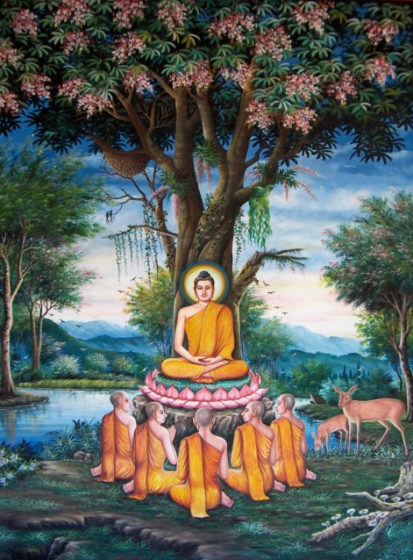The Story of Thera Maha Moggallana
Verse 137: He who does harm with weapons to those who are harmless and should not be harmed will soon come to any of these ten evil consequences:
Verses 138, 139 & 140: He will be subject to severe pain, or impoverishment, or injury to the body (i.e., loss of limbs), or serious illness (e.g., leprosy), or lunacy, or misfortunes following the wrath of the king, or wrongful and serious accusations, or loss of relatives, or destruction of wealth, or the burning down of his houses by fire or by lightning. After the dissolution of his body, the fool will be reborn in the plane of continuous suffering (niraya).
The Story of Thera Maha Moggallana
While residing at the Jetavana monastery, the Buddha uttered Verses (137), (138), (139) and (140) of this book, with reference to Thera Maha Moggallana.
Once, the Nigantha ascetics planned to kill Thera Maha Moggallana because they thought that by doing away with Thera Maha Moggallana the fame and fortune of the Buddha would also be diminished. So they hired some assassins to kill Thera Maha Moggallana who was staying at Kalasila near Rajagaha at that time. The assassins surrounded the monastery; but Thera Maha Moggallana, with his supernormal power, got away first through a key hole, and for the second time through the roof. Thus, they could not get hold of the Thera for two whole months. When the assassins again surrounded the monastery during the third month, Thera Maha Moggallana, recollecting that he had yet to pay for the evil deeds done by him during one of his past existences, did not exercise his supernormal power. So he was caught and the assassins beat him up until all his bones were utterly broken. After that, they left his body in a bush, thinking that he had passed away. But the Thera, through his jhanic power, revived himself and went to see the Buddha at the Jetavana monastery. When he informed the Buddha that he would soon realize parinibbana at Kalasila, near Rajagaha, the Buddha told him to go only after expounding the Dhamma to the congregation of bhikkhus, as that would be the last time they would see him. So, Thera Maha Moggallana expounded the Dhamma and left after paying obeisance seven times to the Buddha. Continue reading










